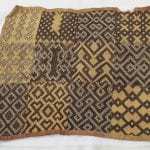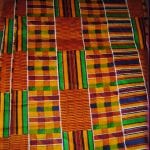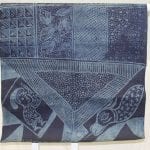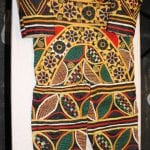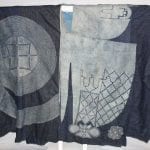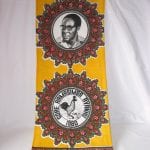Black History Month in the World Cultures department: Uncovering African textiles
Posted on by Fay Curtis.
by Lisa Graves, curator of World Cultures
Black History Month is always a great excuse to work on making our African collections in the World Cultures department more accessible.
Last year we created narratives around groups of objects, such as beadwork and sculpture, and added them to our online database.
This year we thought we’d start and finish the month talking about a couple of projects we are just starting that will use African, and diaspora, material from our British Empire and Commonwealth collection.
Today I will talk about working on an exhibition due to open next summer at Bristol Museum & Art Gallery, looking at textiles from across the continent of Africa.
We have always had a good selection of different types and styles of cloths and costumes from the late 1800’s and first half of the 1900’s – from Kuba cloth from Congo, to Kente from Ghana, and Adire from Nigeria.
So the spark of idea for the exhibition some months back was to be able to show these historic pieces along with some more recent material that we knew was waiting to be uncovered in the British Empire and Commonwealth collection.
But when we got round to properly looking through the boxes and boxes and boxes of textiles held at our off-site store we realised we were going to have a pretty special selection to choose from.
We found dozens and dozens of kangas (printed cotton garments with political or moral messages) from Zimbabwe, Swaziland and Kenya. We discovered that we now have ten times the amount of agbadas and rigas (large, wide sleeved tunics) from the Yoruba and Hausa people of Nigeria than we originally had in the museum. And even found another funeral masquerade costume from the Igbo people of Nigeria.
There were also some individual stand-out pieces like the 1980’s European style dress and suit made from barkcloth – the clothes were a gift to some European friends from a Ugandan chief – and a Victorian style heavy cotton dress worn today by Herero women from Namibia.
At the moment we have a long list of possible pieces we can use so I am talking to conservators about how much it will cost to get our selection ready for display, what are the themes we want to explore – identity? power? fashion?, what kind of community involvement we would like to develop and what education programmes we can run alongside the exhibition.
One of my favourite parts about exhibition planning is working with the designer on how it will look in the gallery. With African textiles you can’t help but be excited by their colour, textures, diversity and sheer exuberant energy. Hopefully we will be able to capture some of that dynamism with a visually stimulating design that will make you want to know more.
Another bonus when it comes to preparing exhibitions is that, not only do we as curators get the opporuntity to delve into our stores and see and touch these fabulous items, but the documentation – recording information about an objects’ history, taking photographs – of our collections becomes vastly improved.
We can then share that with researchers across the world as well as with anyone interested in design, fashion, making and creating or in the stories of the people and cultures who produced them.
If you can’t wait till next year then you can start here with a look at some of the African textiles in our online database.
